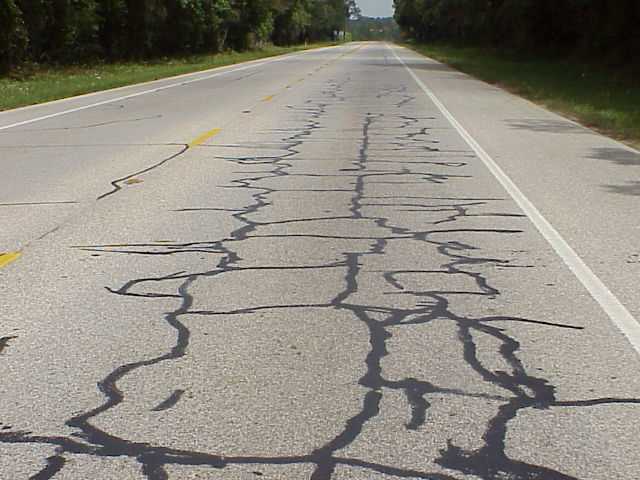Section 2: Selecting Pavements for Seal Coat Treatment
Anchor: #i999931General
The performance of a seal coat is, in part, governed by the structural adequacy of the underlying pavement layers. These underlying layers must possess the strength required to carry the wheel loads expected to use the facility, since the thickness of a seal coat will not add to the strength of the pavement layers. The seal coat acts mainly as a wearing course, sealing the road from the infiltration of surface water, and providing a skid-resistant surface.
Anchor: #i999941Pavement Distress Types
A seal coat is applied to existing pavements for the overall purpose of extending the life of the pavement. A seal coat can correct minor surface deficiencies as described below:
Cracking. A seal coat will effectively prevent water from seeping through narrow surface cracks (1/8 inch or less) and damaging the base or underlying paved layers. Cracks wider than 1/8 inch should be crack sealed well ahead of seal coat placement.
Raveling (or shelling). Raveling is the condition in which aggregate particles in the old pavement have broken loose. A seal coat will generally cement the material in place and prevent additional raveling.
Bleeding. This is the condition in which excess asphalt in the existing pavement migrates to the surface. It appears as a black area and will reduce skid resistance. Placing a seal coat on top of a surface that is already bleeding may not correct this type of problem. Under the action of rolling and traffic, the aggregate from the new seal may become fully embedded into the bleeding asphalt surface. It may be possible to correct a bleeding surface with a seal coat if a larger maximum size aggregate (such as a Grade 3) is used. The void space in the larger rock layer may accommodate the excess asphalt.
Lack of Skid Resistance. A seal coat will bring angular aggregate particles into contact with vehicle tires to improve skid resistance. It is recommended that the accident history of a pavement be reviewed to determine if improved skid resistance is needed.
Figure 2-2. Good candidates for seal coat.


